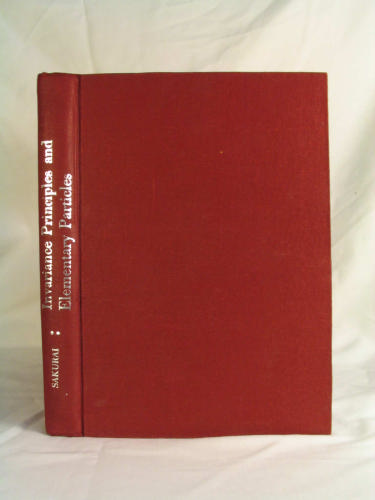Invariance Principles and Elementary Particles epub
Par dickenson carolyn le dimanche, juillet 24 2016, 10:22 - Lien permanent
Invariance Principles and Elementary Particles. Sakurai J.J.

Invariance.Principles.and.Elementary.Particles.pdf
ISBN: 0691079870,9780691079875 | 338 pages | 9 Mb

Invariance Principles and Elementary Particles Sakurai J.J.
Publisher: PUP
Parton dynamics is associated with a given future/past light-cone. Particles with half-integer spin are subject to the Pauli exclusion principle: no two identical fermions may occupy the same quantum state simultaneously. A formalism that aims to promote phase-space duality to a level of a fundamental principle was followed in the context of the equivalence postulate approach to quantum mechanics [8–15]. In particular, it is invariant under the Möbius transformations where and . A theory of fundamental particle interactions built from the gauge invariance principle alone doesn't allow the existence of massive gauge bosons. Quantum physics suggests that a vacuum is anything but empty, with virtual particles regularly popping in and out of existence within Planck instants of time. �This principle is invariant for any kind of coordinates transformation (any kind of coordinate system) •This principle can be expressed also for non-mechanical systems (thermodynamic systems, electromagnetic fields, elementary particle fields). The primary advantage of string theory is that it gives rise to the gauge and matter ingredients of elementary particle physics and predicts the number of degrees of freedom needed to obtain a consistent theory. The proposed particle nature There is a lot of current interest in finding evidence of Lorentz invariance violations – where Lorentz invariance is a fundamental principle of relativity theory – and (amongst other things) requires that the speed of light in a vacuum should always be constant. Hence a full Poincare invariance results meaning the emergence of conserved four-momentum identifiable as inertial four-momentum assignable to the preferred extremals of Kähler action defining Bohr orbits. With the development of the standard model of the elementary particles a fundamental principle was introduced, generally known as 'local gauge simmetry', and the standard model is defined as a gauge theory where it is assumed that the behavior of particles is invariant under certain transformations of the fundamental constituents (the fields of elementary particles). With the rapid development of the physics of elementary particles during the 1950s, new conservation laws were discovered that have meaning only on this subatomic level. These light-cones give rise to Russian doll cosmology with cosmologies within cosmologies such that elementary particles formally correspond to the lowest level in the hierarchy. It stood then, the Principle was expressed in a manner that would probably come particles. Symmetry has been a powerful concept in physics for nearly 100 years, allowing scientists to find unifying principles and build theories that describe how elementary particles and forces interact now and in the early universe.